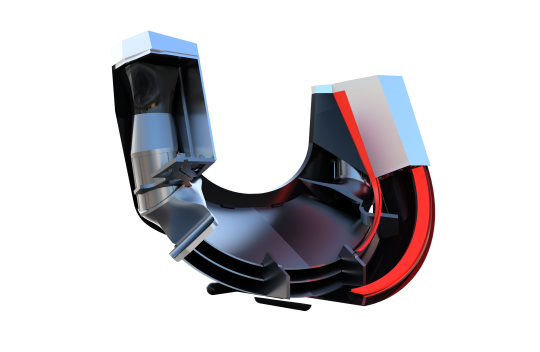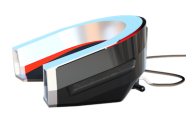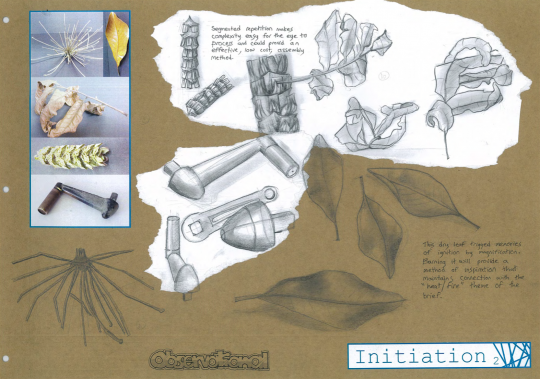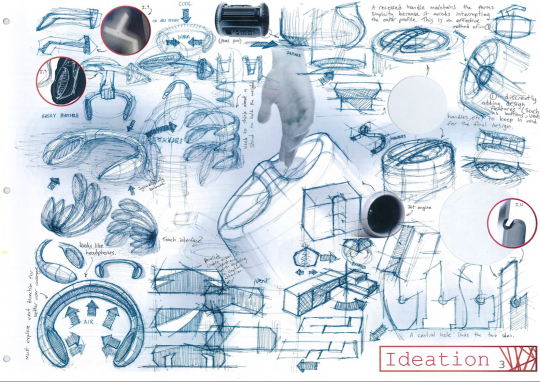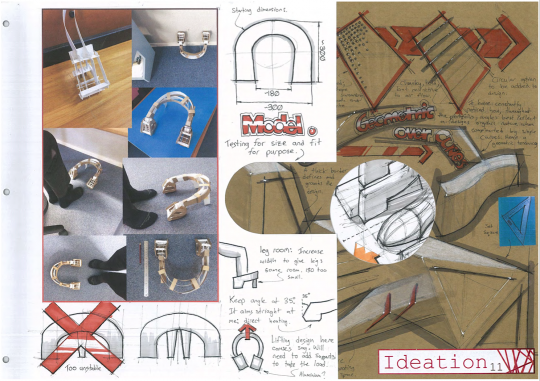Top scholar DVC: An efficient heater that looks good too
Are heaters boring?
Year 13 student Thomas Morrison thought that heaters were pretty boring! Conventional column heaters and fan heaters had great functionality but questionable aesthetics.
Thomas set himself the design challenge of developing a multi-purpose heater that was versatile, aesthetically pleasing, and would evoke a positive emotive experience.
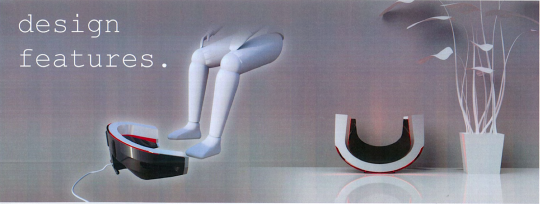
Ideation
Attributes
Thomas carried out extensive research into attributes that would contribute to a successful heater design. These included heating space, heater size, heating methods, fire risk and safety, and temperature regulation.
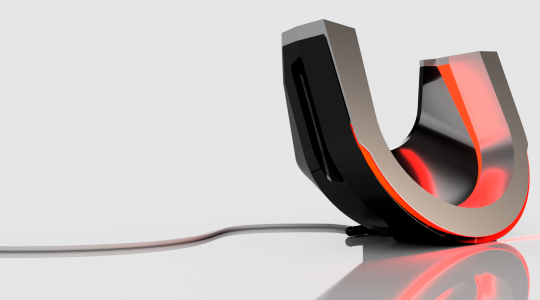
Materials
Thomas looked into materials used in heaters. A recent innovation here is micathermic heating elements made from mica. He discovered that although this was a very efficient heating material, there were ethical issues associated with the mining of mica and problems with temperature control and quality in mass production.
The psychology of heating
He also considered the psychology of heating. Investigating the timeline of heating showed how much heating had contributed to human comfort. By producing a heating product that reproduced an emotive experience of safety, comfort, and warmth, Thomas felt he would improve the user's experience. This thinking was later translated into his use of form – the heater had a significant base similar to an open fire.
Colour was important in Thomas’ design. Red was the only true colour he used. Black helped ground the design to make sure it didn't make too much of a statement. The aluminium highlights the curve while the shiny surface reflects the warm tones from the red light and the surrounding environment.
For the portfolio, Thomas selected a colour pallet centred around yellow-based greys, orange, and red – to reflect the "warm" theme choice.
Initiation
Thomas began with a design theme that evoked a dry rustic feeling. With this theme in mind, one of his design ideation strategies was to take photographs of different objects in the reserve next door to his home.
Dried leaves and organic matter provided a great base for developing curved lines. He also explored man-made objects for more structured shapes. An old rusty window-winder salvaged from a classroom provided a starting point for analysing shape and structure.
At this stage of the project, he tried to identify and consolidate shapes and patterns that were interesting or could possibly be useful in his heating design. Being in a free state of mind and considering all alternatives was seen as important to generate innovation in design.
Thomas investigated James Dyson as a designer who has successfully innovated in the area of everyday items such as heaters, fans and vacuum cleaners. His mantra about setting “high expectations that you will succeed despite any setbacks or frustrations”, influenced Thomas’s design work. Thomas pursued ideas rather than dispensing with them, even if they seemed improbable.
Visual techniques and strategies
Paul Bourdot, Thomas’ DVC teacher, notes that the portfolio stood out in terms of the diversity of the design thinking and the flow of ideas.
The design work followed a very logical progression using visual techniques and strategies to communicate the on-going act of designing and the design narrative – a Graphics scholarship standard requirement.
Thomas used a variety of mediums for rendering designs. These ranged from pencil and paper to Adobe Illustrator, Photoshop, Sketchbook Pro, and Autodesk 360. Each medium has its advantages and disadvantages, so there is more freedom with a diverse repertoire.
Detailed construction instructions as well as technical drawings of the finished product are also provided. Investigating to this level of detail allowed him to refine the design according to physical parameters.
Thomas notes that it is important in graphics to learn how to use a variety of both modern and traditional visual techniques and strategies and to bring these all together.
Modelling
As well as drawing and computer generated design, Thomas carried out modelling using card and plasticine.
He found that putting together cardboard shapes was a quick way to test whether the size and shape of the heater design would allow for a person’s feet and legs to sit comfortably within the heater design. This resulted in changes in the both the dimensions and the addition of supports to the design to ensure the angle was maintained and the heat direction correct.
The cardboard modelling and 3D printing of components was instrumental in moving the design work on.
Paul notes that the purchase of two 3D printers last year has also been great for junior DVC classes. Students are enjoying and gaining confidence in using these. They too are finding generating a 3D model is an efficient way of testing ideation as well as improving presentation. Some of the level 3 students have 3D printed their spatial designs.
Presentation
Thomas put significant thought and effort into setting up his portfolio.
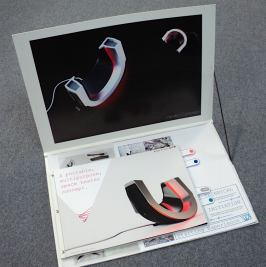
This assisted his overall design thinking and meant that the assessors were easily able to see how his ideas evolved.
The final layout was more in tune with how the content was created. The portfolio is constructed from the bottom up and the pages contain cut out circles that reference the reader through to the pages below clearly showing evolution, integration and synthesis of ideas.
Thomas found his well-developed DVC skills a great asset in his first year at university, where he is studying engineering. He comments:
Graphics is not just about making pretty pictures. Communicating ideas, and thinking through processes, are important skills in business, engineering, science, and pretty much anything that involves sharing ideas.
Thomas Morrison
